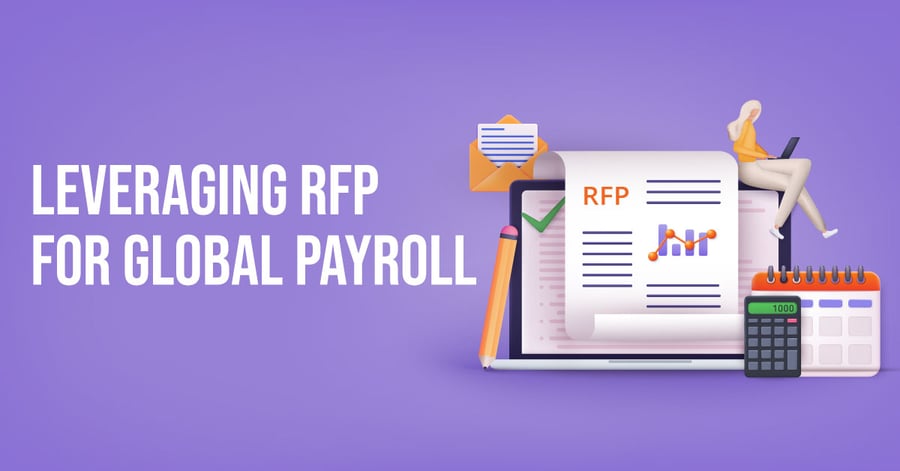
- Home
- Global Payroll
- Choosing the Right Partner for Global Payroll Management – Leverage an RFP template
Choosing the Right Partner for Global Payroll Management – Leverage an RFP template
Published :

Taking the first step towards Payroll Transformation journey
If the answer to any of the above questions is NO, you need to ACT TODAY! Taking the first step towards change is always daunting. But it is necessary to do so - now more than ever.
Many organizations face the challenge of obsolete processes. They are in a dire need of a suitable payroll solution that addresses the standardization & harmonization needs while expanding to newer territories and geographies. Payroll processes demand equal attention and rigor as compared to any other core business process. Any move towards instituting an efficient payroll process starts with an in-depth understanding of the issues with the existing payroll systems. Simultaneously, you need to identify future objectives and understand the expectations from the envisioned global payroll solution. Once you have identified the requirements, it is essential to cast as wide a net as possible for identifying suitable prospective vendors. On receiving proposals from interested parties, choose a payroll vendor best suited to your needs with the help of a thorough and in-depth evaluation of all the responses.
The organization must opt for a payroll system that caters to its current payroll needs and accommodates its future projected requirements. A proper ‘needs evaluation’ effort helps obviate wasteful expenditure of time and resources.
To arrive at the specifications for their future-ready payroll system, organizations need to assess all relevant business considerations like scalability- both in terms of headcount and geographical footprint, data security, data integration across locations, and other related factors. This approach — seeking answers or solutions to the issues identified in the existing system — is the most efficient means for preparing to source the best solution for payroll operations.
The next step is the crucial task of selecting a vendor that meets all the stringent requirements for payroll software. Organizations usually resort to issuing a Request for Proposal (RFP) to find the most suitable vendor. A clear definition of the requirements must be included in the RFP to find the best-suited partner in alignment with the firm’s payroll requirements of the future.
A comparative evaluation of the proposals received, forms the basis of the final selection of the Vendor who will provide the payroll software. This approach enables firms to identify the vendor that closely aligns with the organization’s payroll requirements and business goals & objectives.
The RFP template must outline the specific requirements that the organization is looking for in a global payroll solution provider. It highlights the vendor’s capabilities, details of the technology required, relevant deadlines, the application process, and the criteria for evaluating the received proposals.
The hallmark of a good RFP is that it elicits comprehensive responses from interested and capable vendors, which, in turn, enables the issuing organization to save time and effort on pointless communication.
A global payroll RFP must be mindful of the following aspects
The primary purpose of this exercise is to fulfill a business need. An in-depth, internal evaluation of the existing system, its drawbacks, and the capabilities necessary to meet future requirements should precede the issuing of the payroll RFP.
Hence, the issuing entity should thoroughly evaluate its needs and seek inputs from all the relevant stakeholders. The coordination of effort for seeking these inputs automatically leads to organization-wide buy-in.
A strategic approach to future payroll requirements by keeping the firm’s long-term business objectives and anticipated growth in mind is a must.
An evaluation of the desired capabilities of the global payroll software also helps identify shortcomings in the existing payroll system that requires addressing through the new system. The flaws could be factors as follows:
The RFP should transparently lay out the benchmark(s) against which the issuing firm will evaluate the solutions/proposals received in response to the RFP.
The company should communicate the same criteria/specifications to all the parties, making it easier for the procuring agency to compare various vendors’ product features and prices.
Selecting the right global payroll solution is just the first step. The true challenge lies in implementing the system effectively to ensure smooth payroll operations across multiple geographies. A well-structured implementation plan minimizes disruptions, ensures compliance, and optimizes payroll processing efficiency. Below are key strategies to facilitate a seamless transition.
A structured implementation plan is crucial for successful payroll software deployment. This roadmap should include:
One of the most critical aspects of payroll services transformation is ensuring accurate data migration. Organizations should:
Given the complexity of managing payroll services across different countries, compliance should be a priority. Organizations should:
To maximize the benefits of global payroll transformation, organizations must:
A global payroll RFP should necessarily include:
Provide a brief background of the organization, including relevant information such as number of locations, number of employees, expected services, etc.
Provide a brief description of the objective for procuring the new payroll system. You also need to provide the details of the current system. If it caters to any interface required with the existing attendance software, business intelligence systems, reporting systems, HR management system, etc.
A description of the technical requirements allows the vendors to assess if their offering for the global payroll system will meet your needs. The requirement overview also enables the vendors to provide complete information required for solution implementation.
Outline all the requirements, such as the bidding company’s track record of past supplies of the payroll software, information security, implementation methodology, compliance requirements, etc.
Clearly explain the selection criteria for deciding the winning bid. The clarity in selection criteria enhances transparency and eliminates the possibility of allegations of unfair practices, favoritism, and litigation.
Communicate the specification of the timelines for the receipt of responses and implementation completion date.
Specify the various costs that your firm will consider in cost calculation for deciding the winning bid.
Clearly, in picking a vendor for global payroll, the topmost considerations are the capabilities of the payroll solution offered and the underlying technology. The price is a relatively lesser consideration. The payroll solution must provide greater automation, data integrity, data security, and, most importantly, insightful analytical reports to aid smart business decisions.
Many firms find it challenging to navigate the RFP process. A good payroll RFP is the starting point for laying the foundation of a mutually enriching relationship between two businesses — the contracting organization and the payroll vendor. Therefore, building a comprehensive template for a payroll RFP is critical.
Based on 25+ years of experience in delivering transformative payroll solutions, we at Ramco Systems have compiled an exhaustive payroll RFP Template covering all the key questions. Click here to download now!
To know more about our solutions, get in touch with us here.
Enterprise asset management (EAM) involves the management of mission critical assets of an organization throughout each asset's lifecycle. EAM is used to plan, optimize, execute, and track the needed maintenance activities with the associated priorities, skills, materials, tools, and information. The aim is to optimize the quality and utilization of assets throughout their lifecycle, increase productive uptime and reduce operational costs.
Enterprise asset management (EAM) involves the management of the maintenance of physical assets of an organization throughout each asset's lifecycle. EAM is used to plan, optimize, execute, and track the needed maintenance activities with the associated priorities, skills, materials, tools, and information.
The software helps in effective maintenance of assets through preventive, predictive, shutdown and breakdown maintenance strategies. The system also helps enterprises mitigate equipment risks by enhanced safety standards. The streamlined operations and improved asset performance helps organizations increase their investment effectiveness.
EAM is important because it helps organizations track, assess, manage and optimize asset quality and reliability. Asset intensive Organizations have hundreds, thousands, even millions of assets which needs to be maintained to maximize / optimize life of these assets to increase the return on investment.
The key features of effective EAM are:
Asset Intensive companies under the following Industries :
Contact us for a meeting and schedule a demo
This differs on case to case basis, based on the type of installation and unique industry specific requirements. Contact us for a meeting and schedule a demo.
This differs on case to case basis, based on the type of installation and unique industry specific requirements. Contact us for a meeting and schedule a demo.
Stay Connected, follow us on LinkedIn / Twitter to know more about EAM Software latest trends.

All Rights Reserved. © Copyright 2024. Ramco Systems.